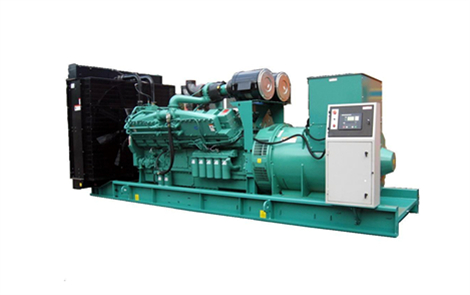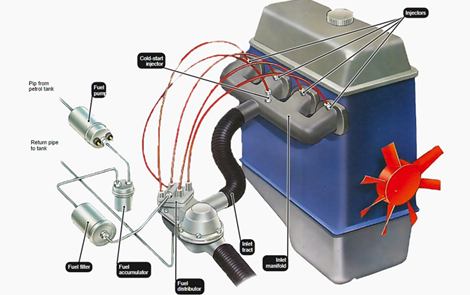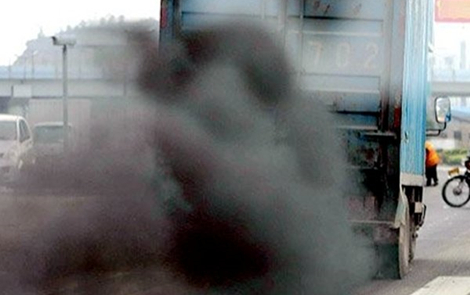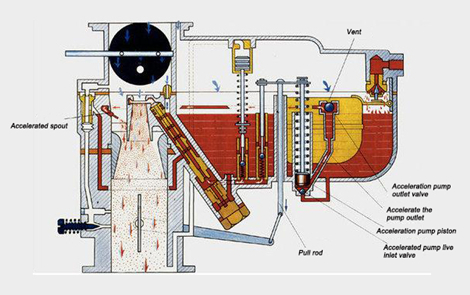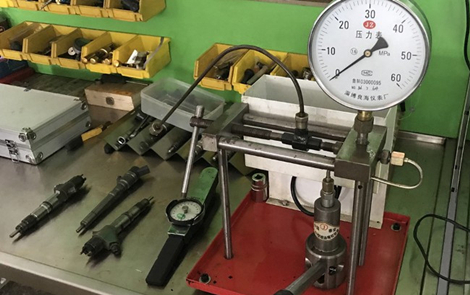The failure of the injector is basically due to the influence of dirt in the diesel engine. The main reason is that the injector head in the combustion chamber is in a high temperature and high pressure environment for a long time. Due to the influence of thermal expansion and contraction, the needle valve is slowly expanded and deformed or the fuel injection port is blocked by carbon deposits. Decrease, gradually unable to properly inject oil, thus affecting the normal operation of the diesel engine. Generally, there are the following points in the injector failure. The common faults and troubleshooting methods of the injector are as follows:
1: Injector is poorly atomized
When the injection pressure is too low, the nozzle hole wears carbon, and the spring end face wears or the elastic force decreases, the injector will be opened in advance, the shutdown is delayed, and the injection atomization is poor. If it is a single-cylinder diesel engine, it will not work. The multi-cylinder diesel engine will have lower power, and the exhaust will emit black smoke. The sound of the machine is not normal. In addition, since the diesel droplets having an excessively large particle diameter cannot be sufficiently burned, they flow into the oil pan along the cylinder wall, so that the oil surface is increased, the viscosity is lowered, the lubrication is deteriorated, and an accident of the burnt cylinder may be caused. Solution: The injector should be disassembled for cleaning, overhaul, and re-commissioning.
2: Injector return pipe is damaged
When the needle valve part is seriously worn or the needle valve body and the injector shell are not tightly matched, the oil return amount of the injector is obviously increased, and some may reach 0.1 to 0.3 kg/h. If the return pipe is damaged or missing, the oil will be lost and waste. Therefore, the return pipe must be intact and sealed so that the return oil can flow smoothly into the tank. If the return pipe is connected to the diesel filter, the terminal shall be provided with a check valve to prevent the diesel in the filter from flowing back into the injector.
3: Needle valve orifice expansion
As the high-pressure oil flow is continuously sprayed, the nozzle hole of the needle valve will gradually be enlarged, resulting in a decrease in the injection pressure, a shorter injection distance, a poor atomization of the diesel, and an increase in the carbon deposit in the cylinder.
Solution: The hole diameter of the single-hole needle injector is generally larger than 1 mm. A steel ball with a diameter of 4 to 5 mm can be placed at the end of the hole, and the hammer is lightly tapped to make the nozzle partially plastically deform and shrink. Aperture. Due to the large number of holes and small aperture, the porous direct-injection injector can only be tapped at the hole end with a high-speed steel milled sample. If it is still unqualified after commissioning, the needle valve coupler should be replaced.
4: The needle is killed
Moisture or acid in the diesel oil will cause the needle valve to rust and get stuck. After the sealing cone of the needle valve is damaged, the combustible gas in the cylinder will also enter the mating surface to form carbon deposit, causing the needle valve to die. The fuel injection is lost, causing the cylinder to stop working.
Solution: The needle valve can be placed in the waste oil to heat up to boiling and smoke, then take out, clamp the tail of the needle valve with a pliers padded with a soft cloth, and pull it out to clean the oil. The needle valve is repeatedly and actively grinded in the valve body until the needle valve member can be slowly withdrawn from the valve body when the needle valve member is inverted. If the injector test fails, the needle valve coupler should be replaced.
5: End face wear of the needle valve body
The end face of the needle valve body is subjected to frequent reciprocating motion of the needle valve, and the pit is gradually formed over a long period of time, thereby increasing the lift of the needle valve and affecting the normal operation of the injector.
Solution: The needle body can be clamped to the grinding machine to grind the end face, and then the fine grinding paste is used to grind the glass plate
6: Injector and cylinder head joint hole leaking oil
When the injector is equipped with the cylinder head, the carbon deposit in the mounting hole should be carefully removed. The copper washer must be flat. It should not be replaced with asbestos board or other materials to prevent poor heat dissipation or sealing. If a copper washer is made, it must be machined to a specified thickness of copper to ensure that the distance from the injector to the plane of the cylinder head meets the technical requirements. For example, the distance of the 135 series diesel engine is 1.5 to 2 mm. If it is too large or too small, the cylinder compression ratio will be affected. In addition, the concave shape of the injector pressure plate should be installed downwards. When tightening, avoid single-sided bias. It should be evenly tightened according to the specified torque. Otherwise, the injector head will leak and smear due to deformation and deflection.
7: Needle valve and needle valve hole guide surface wear
The needle valve frequently reciprocates in the needle valve hole, and the intrusion of impurities and dirt in the diesel oil will gradually wear the guide surface of the needle valve hole, so the gap is increased or the scratch is scarred, resulting in increased leakage inside the injector. The reduction, the injection amount is reduced, and the injection time is delayed, which makes the diesel engine difficult to start.
Solution: When the injection time delay is too much, the locomotive can't even run. In this case, the needle valve coupler should be replaced.
8: The fuel injector has dripping oil
When the fuel injector is working, the sealing cone of the needle valve body will be frequently and strongly impacted by the needle valve. In addition, the high-pressure oil flow is continuously sprayed from the place, and the taper surface will gradually appear nicks or spots, thereby losing the seal and causing the seal. The injector is dripping oil. When the diesel engine temperature is low, the exhaust pipe emits white smoke, and when the machine temperature rises, it becomes black smoke, and the exhaust pipe emits an irregular sound of the cannon. At this time, if the oil supply to the cylinder is stopped, the smoke and the sound of the cannon will disappear.
Solution: The injector can be disassembled, and the cone surface is grinded with a small amount of chrome oxide fine grinding paste on the needle valve head (not to be stuck in the needle valve hole), then washed with diesel oil and charged into the injector. . If it still fails, you need to replace the needle valve.
